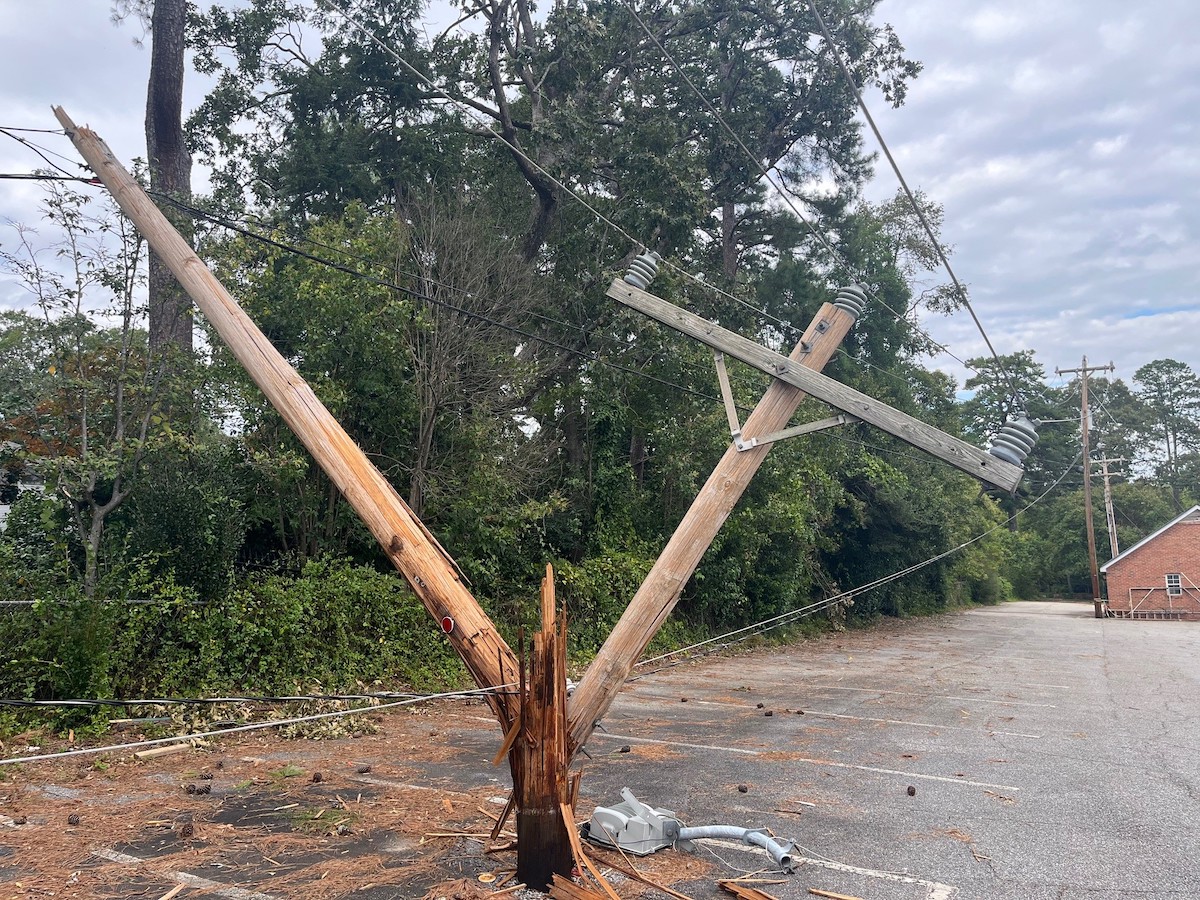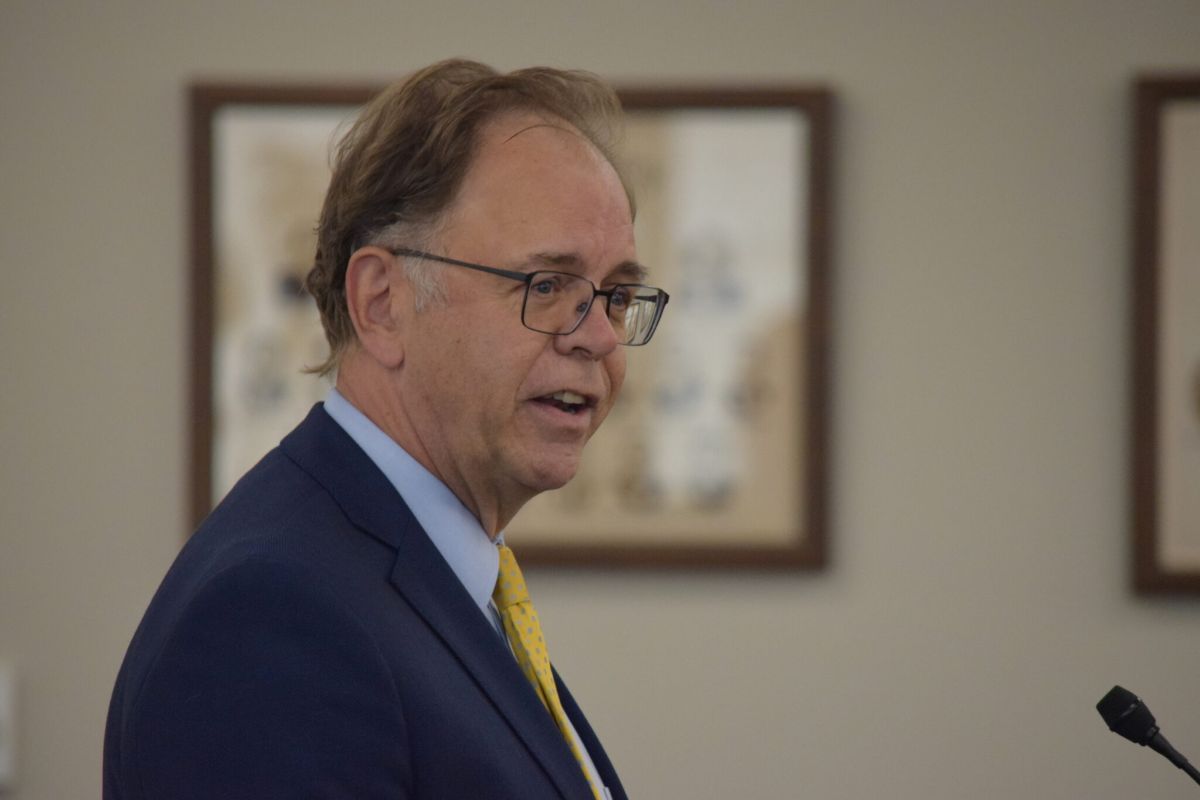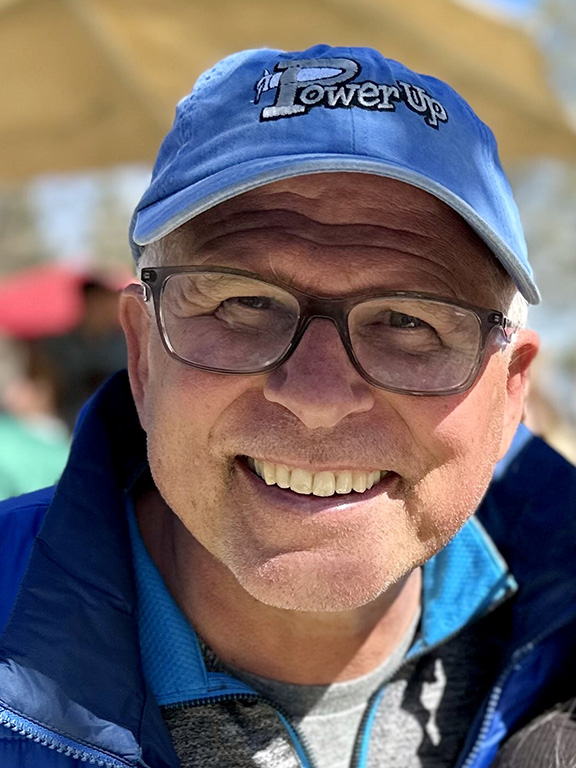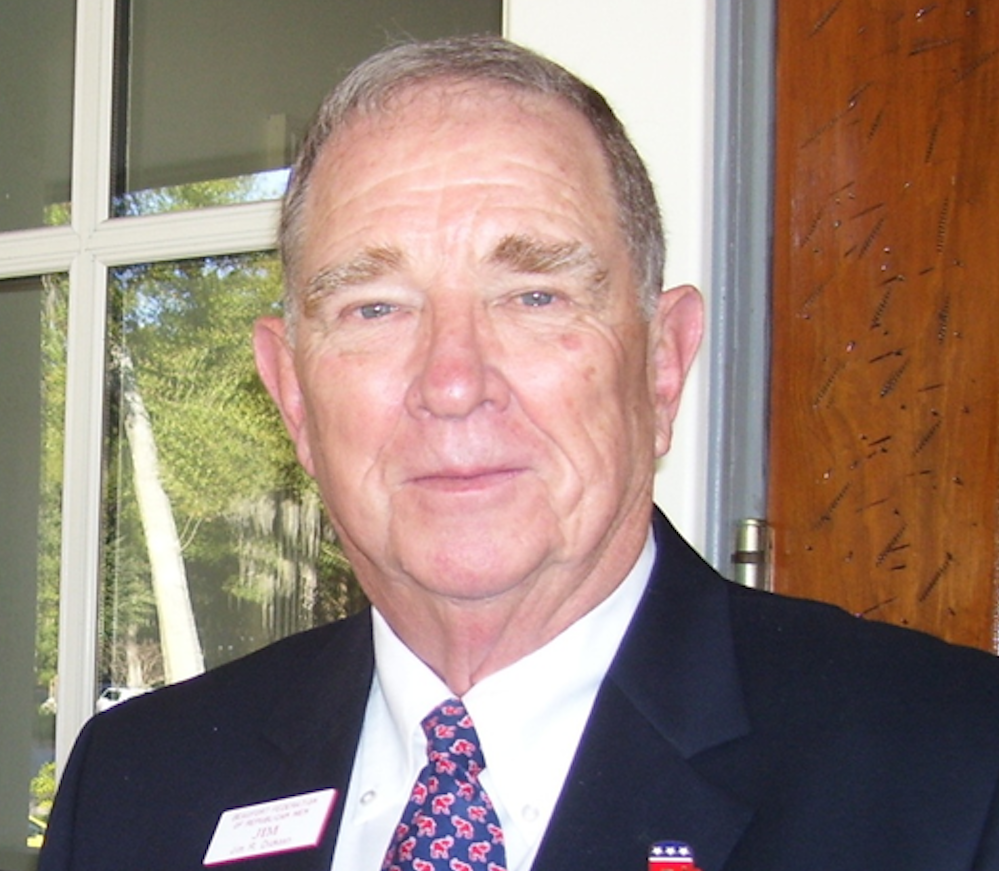By Paul Hyde
More than 1.2 million South Carolina homes and businesses lost power after Hurricane Helene pummeled the Southeast.
Other states may have seen more property damage and catastrophic flooding, causing a higher death toll in North Carolina that’s still rising.
But South Carolina led the Southeast in power outages. That’s remarkable considering that South Carolina is the smallest of the states heavily impacted by Helene.
The massive power outage need not have been so severe. An obvious solution to outages, though an expensive one, would be to bury more power lines — undergrounding, it’s called — leaving fewer utility poles and power lines vulnerable to high winds and falling trees.
On Monday night, three days after the disaster, South Carolina still had the most power outages (688,655) of any state, followed by Georgia, with 491,401 outages, and North Carolina, with 397,758, according to PowerOutage.US.

Those power outages, centered in the Upstate and along the Georgia border, created a lot of ongoing misery for South Carolinians, especially as temperatures climbed above 80 degrees.
Outages pose a danger especially to elderly, disabled and other vulnerable South Carolinians. Families are left in the dark, sometimes cut off from communication.
Families lose food and medicine due to a lack of refrigeration.
Downed power lines themselves remain an obvious hazard, too.
Many Upstate restaurants and grocery stores, lacking electricity, were forced to close temporarily, sacrificing not only profits but perhaps refrigerated stock as well.
The Electric City
In the wake of Helene, my hard-hit Upstate city of Anderson was a mess of fallen trees, damaged homes, blocked roadways and hanging power lines.
Ironically, Anderson enjoys the nickname of “The Electric City,” a moniker it earned in 1895 from the Charleston News and Courier when Anderson city leaders built a hydroelectric plant on the Rocky River, providing a continuous supply of power to the city.
Anderson was one of the first cities in the Southeast to electrify. Helene tossed the city back into the 19th Century.
Local reports suggested the storm was among the worst weather-related disasters in Anderson County’s history, with more than 70,000 still without power on Monday.
In the immediate aftermath of Helene, the city’s major arteries were clogged with cars as people apparently searched for grocery stores or restaurants that were still open.
There were very few, and they were overrun.
Many of the businesses and offices we rely on had to close temporarily due to a lack of power: Doctors’ offices, drug stores, churches, day care centers, libraries, and city, county and state government offices.
Mail was delivered Monday, but the main post office had no power and remained closed. Schools and universities canceled classes.
Dozens of traffic lights and street lights were still out Monday night, creating a hazard on the road. It’s striking to see (or I should say not see) familiar neighborhoods shrouded in pitch darkness.
Gas for cars or generators was hard to come by over the weekend as the power outage closed almost all gas stations in town. The competition for fuel was fierce.
At times, internet and cell phone service was spotty. Some restaurants and grocery stores that were open operated on a cash-only basis due to interrupted internet service.
Ice to store food was hard to find.
Tempers flared among Clemson residents as Clemson University decided to proceed with Saturday’s game against Stanford, which brought 80,000 spectators to Clemson at a time when many locals lacked power, and ice and gas were scarce.
But kudos to the many people in the Upstate who continue this week to remain calm and cooperative and check on their neighbors.
Interestingly, the Clemson game could be played only because the stadium was lit up by underground power lines.
Burying power lines
The idea of burying more power lines to reduce the extent of outages is not new. The topic arises at least in some quarters every time there’s a widespread power outage here in the Upstate.
Ice storms that knock out power for days can be particularly brutal for Upstate residents suffering through freezing temperatures with no heat in the home.
No one would suggest that we could completely eliminate power outages, but experts agree that we could reduce them by more aggressive undergrounding.
A Princeton study found that undergrounding could “drastically reduce” the impact of power outages.
Buried power lines are safe from wind, ice and falling tree limbs. Undergrounding can shorten restoration times, as there would be fewer utility poles and above-ground power lines to fix.
Buried power lines can help prevent electrocution injuries and deaths. Plus, many agree that buried power lines provide a more aesthetically pleasing view.
Most or all new planned communities appear to choose to bury lines rather than string them overhead.
The Upstate’s major power provider, Duke Energy, needs to step up its undergrounding efforts.
The cost of undergrounding, of course, could be significant. Some estimates suggest that it’s 10 times more expensive to bury power lines than to run them above ground.
And that cost is likely to be passed on to customers — you and me.
But like me, many South Carolinians would probably be willing to pay more on their monthly bills to support more aggressive undergrounding over the course of many years.
It won’t happen without a significant outcry from South Carolinians who are tired of widespread and dangerous outages, sometimes in extremes of weather. State lawmakers and the Public Service Commission of South Carolina will need to exert pressure on energy companies and perhaps provide financial support.
As we recover from Helene, we need to build back stronger for the future.
We’re faced with a stark choice: We can remain in the dark. Or we can modernize our state’s infrastructure, reduce powers outages and continue to improve South Carolina’s quality of life.
Paul Hyde is a longtime journalist and teacher in the Upstate. He worked 18 years for the Greenville News as a columnist, editorial writer, education reporter and arts writer. He holds undergraduate and graduate degrees from Clemson and Harvard universities. He has written for the Houston Chronicle, Dallas Morning News and USA Today, among other publications. He currently is a regular contributor to the Greenville Journal, Atlanta Journal-Constitution and Classical Voice North America.












